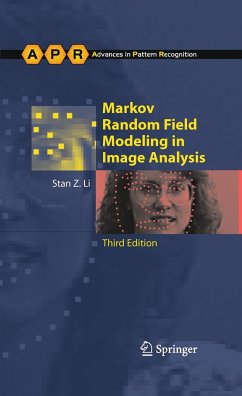
Multiresolution Image Shape Description
Versandkostenfrei!
Versandfertig in 1-2 Wochen
39,99 €
inkl. MwSt.
Weitere Ausgaben:

PAYBACK Punkte
20 °P sammeln!
Much of our understanding of the relationships among geometric struc tures in images is based on the shape of these structures and their relative orientations, positions and sizes. Thus, developing quantitative methods for capturing shape information from digital images is an important area for computer vision research. This book describes the theory, implemen tation, and application of two multi resolution image shape description methods. The author begins by motivating the need for quantitative methods for describing both the spatial and intensity variations of struc tures in grey-scale imag...
Much of our understanding of the relationships among geometric struc tures in images is based on the shape of these structures and their relative orientations, positions and sizes. Thus, developing quantitative methods for capturing shape information from digital images is an important area for computer vision research. This book describes the theory, implemen tation, and application of two multi resolution image shape description methods. The author begins by motivating the need for quantitative methods for describing both the spatial and intensity variations of struc tures in grey-scale images. Two new methods which capture this informa tion are then developed. The first, the intensity axis of symmetry, is a collection of branching and bending surfaces which correspond to the skeleton of the image. The second method, multiresolution vertex curves, focuses on surface curvature properties as the image is blurred by a sequence of Gaussian filters. Implementation techniques for these image shape descriptions are described in detail. Surface functionals are mini mized subject to symmetry constraints to obtain the intensity axis of symmetry. Robust numerical methods are developed for calculating and following vertex curves through scale space. Finally, the author demon strates how grey-scale images can be segmented into geometrically coher ent regions using these shape description techniques. Building quantita tive analysis applications in terms of these visually sensible image regions promises to be an exciting area of biomedical computer vision research. v Acknowledgments This book is a corrected and revised version of the author's Ph. D.














